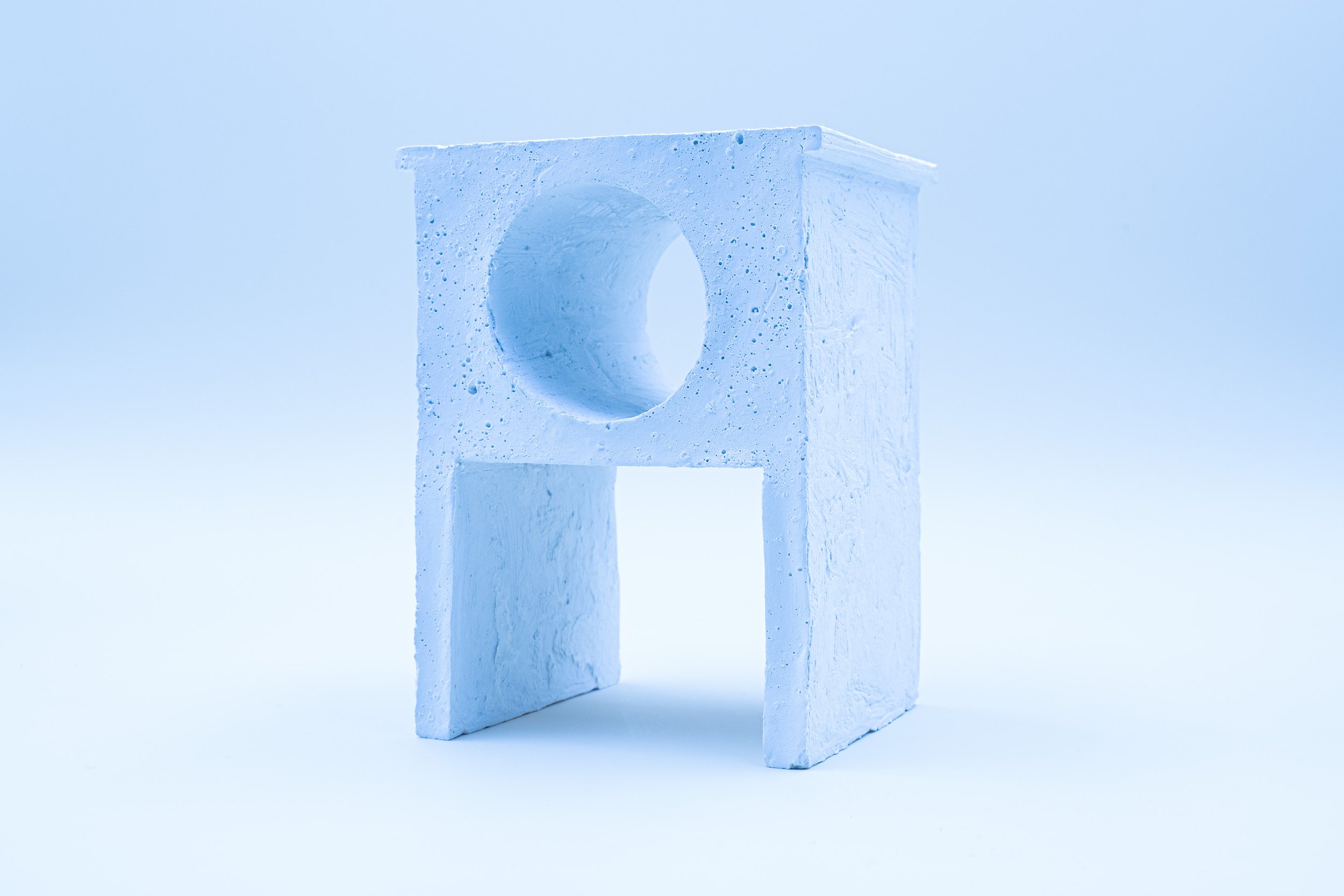I is something movable
In the beginning was the room under the chair.
Then came the chair.
Together they form a synthesis and symbolize a concept of art and a concept of the self.
This game of thaught was inspired by Bruce Nauman’s sculpture “Cast of the Space under my Chair” which he created based on a statement by Willem de Kooning that goes something like this:
“If you paint a chair you paint the space between the rungs.”
What is the space between the rungs?
For Bruce Nauman it meant looking at the unknown and the unsettling.
Nauman:
“I was thinking like that: about leftovers and negative spaces ...
Negative space for me is thinking about the underside and the backside of things.”
“I know there are artists who function in relation to beauty—who try to make beautiful things. They are moved by beautiful things and they see that as their role: to provide or make beautiful things for other people. I don’t work that way ... My work comes out of being frustrated about the human condition. And about how people refuse to understand other people. And about how people can be cruel to each other. It’s not that I think I can change that, but it’s just such a frustrating part of human history.”
So this is the negative space,
let’s call it the existential space,
a space for the struggling individual in the face of the human condition.
The positive, the chair itself, is a symbol
for another attitude towards art, represented by a quote from
Matisse:
“What I dream of is an art of balance, of purity and serenity devoid of troubling or depressing subject matter … a soothing, calming influence on the mind, something like a good armchair which provides relaxation from physical fatigue.”
Let’s call the positive space a space of harmony- producing a feeling of belonging.

Taken together, these two concepts can form a synthesis and relate to each other. So this is a relation, but it is not our art concept, yet.
Let’s connect it to another synthesis of opposites - Sören Kierkegaards concept of the human self.
Kierkegaard:
“Man is a synthesis of the infinite and the finite, of the temporal and the eternal, of freedom and necessity, in short it is a synthesis.
A synthesis is a relation between two factors. So regarded, man is not yet a self.
...
If on the contrary the relation relates to its own self, the relation is then the positive third term, and this is the self.”

If on the contrary the relation relates to its own self, the relation is then the positive third term, and this is the self.”
*
If on the contrary the relation relates to its own self, the relation is then the positive third term, and this is the self.” *
This relation is the positive third term,
and this is the self.*
Let’s apply the term of the positive third to the idea of art as a synthesis between the negative space of the existentialist and the positive space of the believer.

What is it then?

Rounding this off, we come to the next instance with Kierkegaard …
“Such a self [the human self] must either have been constituted by itself or have been constituted by another.
If this relation ... is constituted by another, it is in turn a relation relating itself to that which constituted the whole relation.
Such a derived, constituted, relation is the human self, a relation which relates itself to its own self, and in relating itself to its own self relates itself to another.”

And what is the other?
*
And what is the other? *
And what is the space between the rungs?
*
And what is the space between the rungs? *
This website is part of the exhibition
“I is something movable” by Hanna Koch, curated by Anne Schülke.
Content and design by Hanna Koch. The text sources are in the links below.
Sören Kierkegaard: The sickness unto death, (A Christian Psychological Exposition for Edification and Awakening by Anti-Climacus, edited by S. Kierkegaard), translated with an Introduction and notes by Alastair Hannay, Penguin Classics, 1989.
Jack D. Flam: Matisse on Art, Phaidon Press Limited, 1973.










